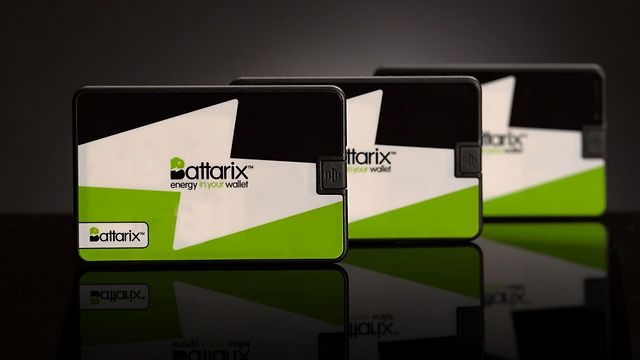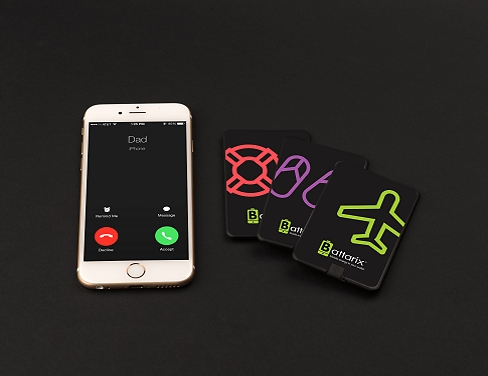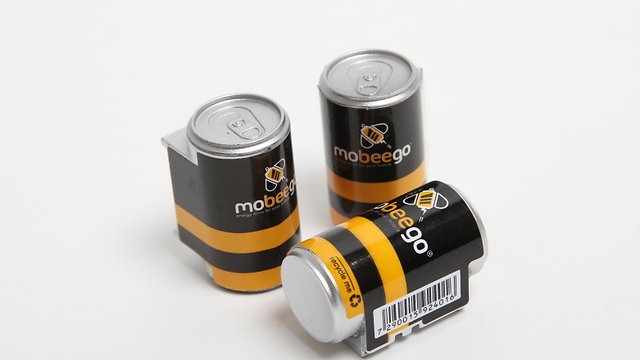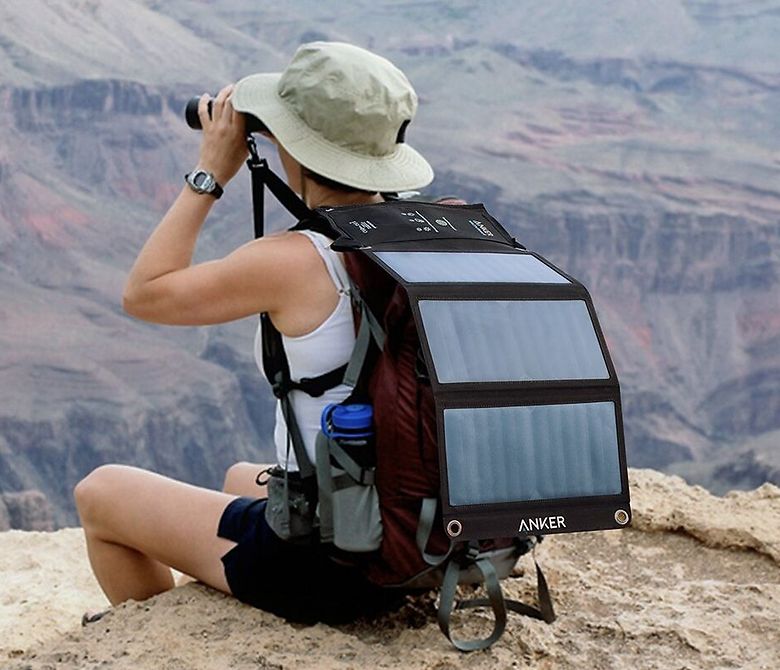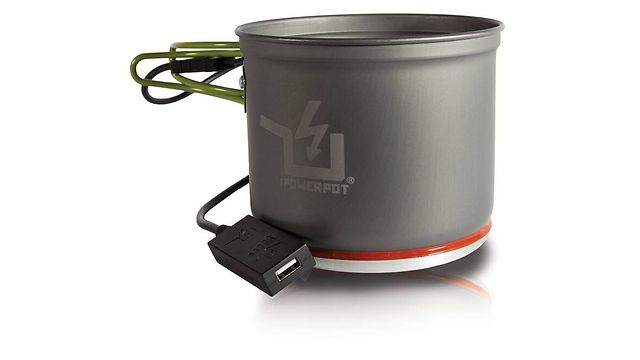
Charge and discard: 'Credit cards' and 'cans' that can power up your phone
Too much Pokemon Go can eat away at your phone battery, leaving you in the red in the middle of the day. Fortunately, there are some new disposable chargers on the market to juice you up.
This summer, quite a few bottles of champagne were popped open at companies manufacturering mobile chargers and backup batteries worldwide. In recent months, an endless flow of youth and adults alike stormed the electronics shops to purchase mobile chargers of all kinds. Demand skyrocketed, and sales increased.
According to the NPD research company, in the US alone, from July 10 to July 23, about 1.2 million mobile batteries were sold, twice the amount sold in the same period last year. In Israel, too, retailers reported growth of tens of percent in demand during this period.
What happened this summer? The answer is not surprising: Pokemon Go.
The sudden jump in demand for mobile chargers was recorded in the short period that followed the launch of the game at the beginning of July, and is attributed mainly to Pokemon Go players. This is a game that asks its players to go out on the street with their smartphone and try capturing virtual Pokemons hiding everywhere. Since it is sometimes requires spending many hours outside searching for Pokemons, the game quickly depletes the smartphone battery, so players went looking for mobile batteries.
Backup for backup
But regardless of Pokemon, the market for mobile chargers and backup batteries has been enjoying constant growth in recent years, and the reasons are obvious: smartphones have become our companions, their use is growing, apps have become more demanding than ever.
Meanwhile, battery technology is not keeping up with the pace and the result is that we are find ourselves with an empty battery halfway through the day and need mobile chargers, which we can carry around with us wherever we go, connected to our smartphone and filling it with renewed energy.
The market has inexpensive quality chargers, which allow charging for several devices simultaneously up to 100 percent. They are certainly good for travel or long days outside the home and the office.
The problem is, however, that they do not meet every need. What happens, for example, when the battery empties after a long period of non-use, so that exactly when you need it, you find out that you forgot to recharge? And how do you deal with a situation in which you left home without the mobile charger, or have no room in your bag or pocket for it?
This is where single use chargers come in handy. They are intended to be a sort of emergency charger, a backup for the backup.
This September, the Israeli-based Power Me Tech company will launch its own development: Battarix, a single use backup battery for the mobile phone.
The battery is particularly compact—the size of a credit card, allowing you to take it in your wallet anywhere, to be used during an "emergency" by connecting it to the smartphone's charging socket and attaching it to the back of the phone during charging.
According to the company, the battery weighs a few grams and has a lifespan "of up to 10 years" and has a capacity of 750 milliamp/hour.
According to the company, it is not a substitute for a regular charger or mobile battery, but rather as a complementary product, since it is not intended to charge your device but rather "keep it alive."
Testing made by the company indicate that the call time the device provides changes by model: for the iPhone 6S, it provides additional call time of 1:48 hours; for the Galaxy S7, a similar time of 1:45 hours, while for the Ascend P6 of Huawei, it will provide 3:36 hours.
And what happens when the battery runs out? It is discarded, preferably to a battery recycling bin.
At every store
At the moment, the Battarix is only compatible with Android devices that have a micro-USB port. Owners of Android devices with a USB-C socket or iPhones will need an adaptor.
Sales of Battarix in Israel, which is expected to cost NIS 24.90, will begin by mail. It will reach kiosks, convenience stores, cellular stands and stores at a later stage. The company is already seeking distribution abroad.
The entrepreneurs behind the Battarix are Shlomi and Adam Avnun, CEO Nir Kaploshnik, Prof. Helena Litzin, development manager Ronen Bar-Tal and Eyal Bar-Zvi.
So far, Power Me Tech company raised about $2 million from private investors in Israel and abroad.
The obvious question is what need is there for a single use charger such as Battarix when the market is flooded with so many regular mobile chargers or batteries for smartphones, that can be recharged time and again and have a larger capacity and faster charging time.
Adam Avnun, one of the founders of the company, explained "A mobile charger like a power bank is large, especially for men that do not walk around with bags, but only have their wallet, keys and phone in their pockets. It is a heavy object that needs to be carried around and charged all the time."
Battarix, meanwhile, views itself as a complementary, interim, solution. A sort of first aid for the smartphone, or a resuscitation battery if you will. Wide availability at stores is vital for this sort of product: the idea is that when you are stuck without a battery, you can enter a nearby store, quickly buy one Battarix, charge up—and continue with your day.
Card versus can
Battarix is not the first to launch an inexpensive and single use mobile charger. At the end of 2015, the Mobeego company, also Israeli, launched its own mobile charger. But even though the entrepreneurs of both companies claim, obviously, the technological advantage of their own product over the competitor—the bottom line is that the products are quite similar.
Mobeego also developed an inexpensive single use battery that does not require charging in advance. It is connected to the phone charging port, giving the user several extra hours of activity (according to Mobeego, one to four hours of use), and then it is discarded.
The main difference is the design: the Mobeego battery looks like an energy drink can, and the multi-use adaptors are sold separately (a kit that includes an adaptor and charging "can" costs NIS 30, while every additional "can" costs NIS 12.90). In contrast, Battarix looks like a thin credit card and its charging adaptor is an integral part of the battery itself.
Mobeego has proven that there is indeed a market for products of this kind. It reported that by June 2016, 450,000 units of its product were sold worldwide, tens of thousands of units in Israel.
Recently, the product was sold to Life Clips, an American company, for $6 million in a cash and stock transaction. Life Clips, from Charlotte, North Carolina, is a company that sells various electronic and technology brands, such as active cameras and smartphone accessories. The product is still sold in Israel at 300 stores and on the company's website.
Mobile on your back
Besides single use chargers, additional mobile charging solutions can be found on the market that are also for an "emergency" and don't require preparation or charging in advance. For example, there are quite a few models of cellular chargers that use solar energy to power up your smartphone.
Israeli computers store Bug, for example, has recently begun selling a cellular USB charger called Anker PowerPort Solar, for NIS 349. The charger is composed of panels spread out and hung on one's backpack that absorb solar radiation and charge electronic devices without any need for an external electric connection. They are suitable for traveling or for soldiers and reservists. The cellular panels are made of tough plastic, so that they are resistant to field conditions, and weigh 417 grams.
There are quite a few original patents for chargers that generate energy from various sources. POWERPOT ($80), for example, is a cooking pot with a USB charger. While it heats up on an open flame (such as a gas burner or stove in the field), the heat is converted into energy that charges mobile devices.
Jaq (€5 per month for two years, available for advance purchase) is a mobile charger with fuel cells that also doesn't require a power source; it generates energy from a mixture of water and salt that comes in disposable cards. When the card is inserted in the charger, hydrogen is generated, constituting a source of energy for your device.












